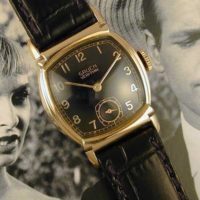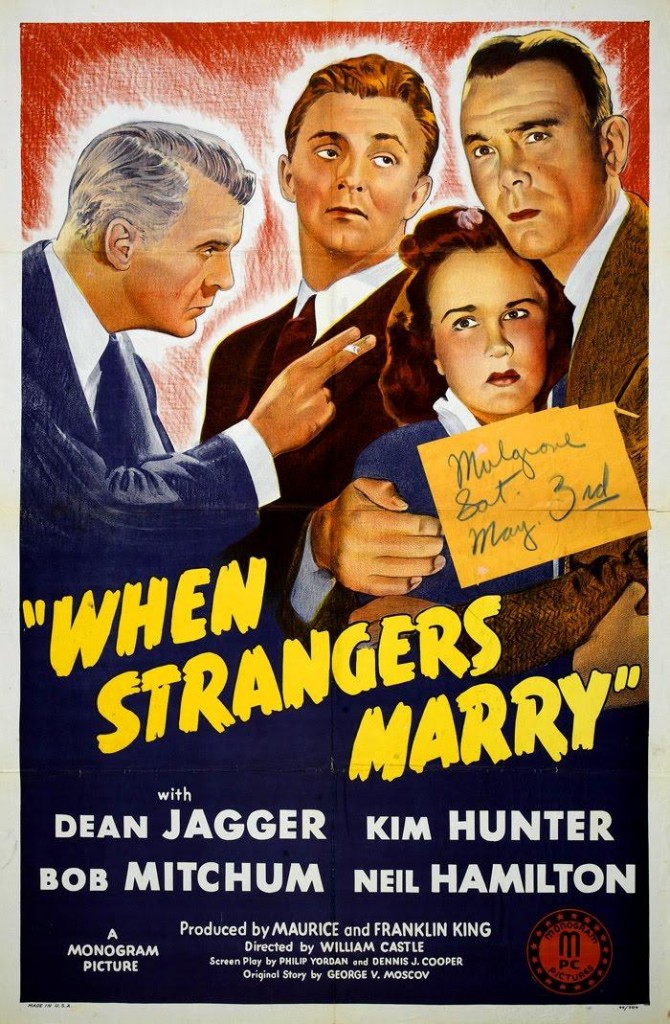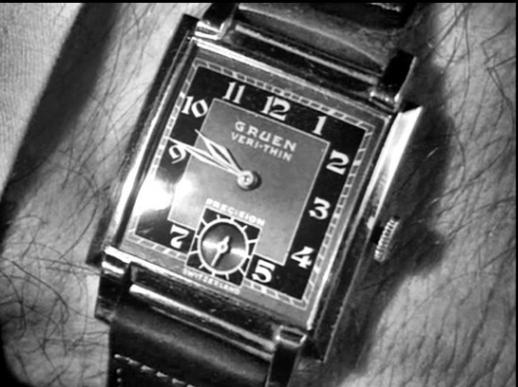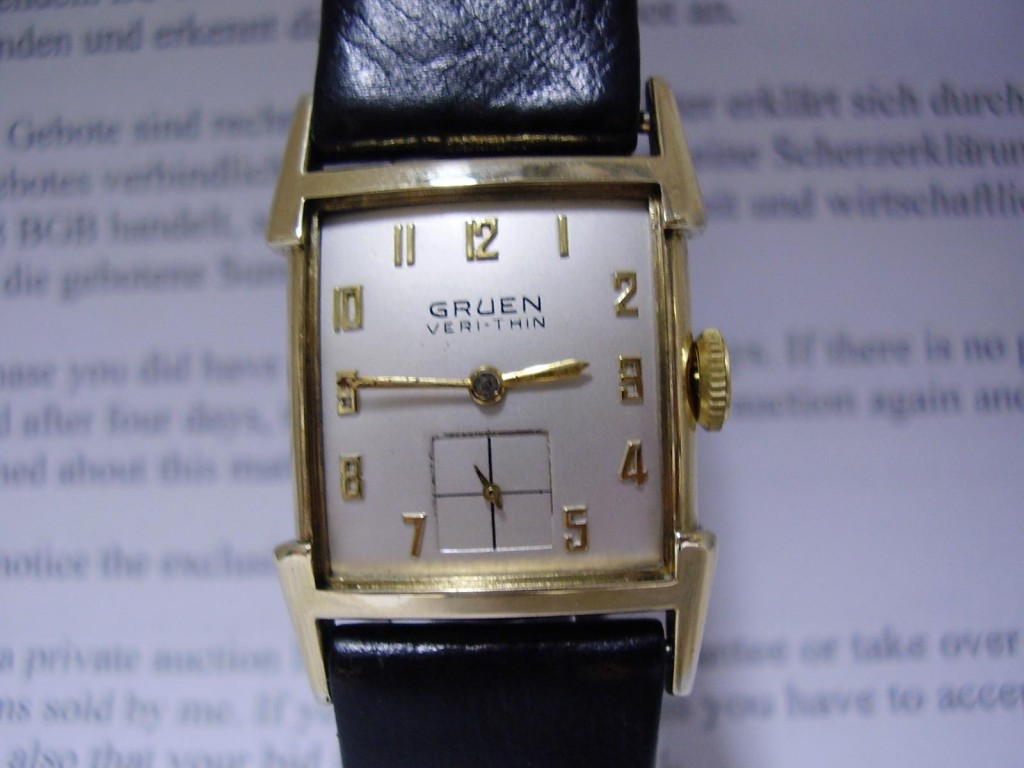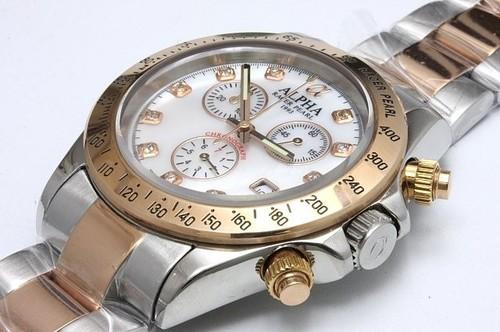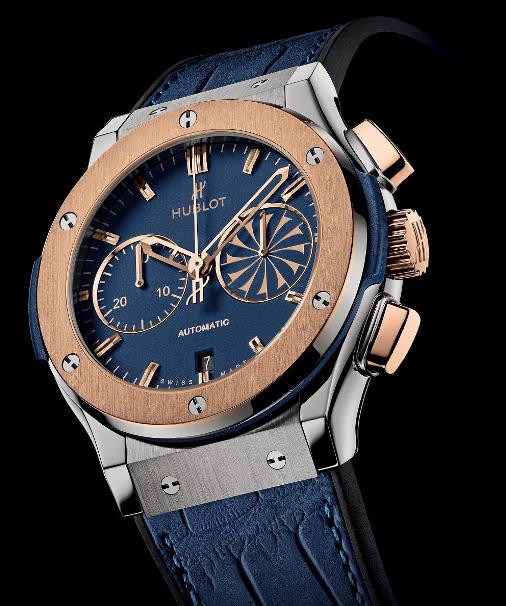In the 1940s, a Gruen Veri-Thin was the watch to own in America. It adorned the wrists of countless movie stars, with early product placement often in movies allowing the watch to be seen and admired in lingering time check scenarios – as was the case when Robert Mitchum wore one in the 1944 movie ‘When Strangers Marry.’
At this time, thin was definitely in. No one wanted a watch that made a huge statement on the wrist. A watch was supposed to be discreetly tucked away under the shirt cuff, and the Veri-Thin, being only 27mm x 36mm in diameter, did this admirably. A watch of this size would be considered petite even for a woman these days.
Gruen, established in 1904, sold a lot of “Veri-Thin” watches because they were good looking, well engineered, and superior to anything on the market at a comparable price. They were the biggest competitor to Hamilton in their day, and outsold Swiss made watches in the States, even though Swiss watches had gained a strong foothold there during the war years due to the fact that all production of watches in the US was based on producing military watches, while the Swiss watch industry was more or less unaffected.
Gruen also had the advantage of not bring involved in war time production of military watches, and, although they imported less watches from their Precision Factory in Switzerland during the war years, they were just about the only US manufacturer producing civilian watches.
But that’s not to say Gruen were not involved in war time production. The U.S. Army Signal Corps, who were responsible for radio communications, used large numbers of Gruen gauges on their electrical and electronic equipment. After the war Gruen gauges became popular with amateur radio operators.
The popularity of the Veri-Thin watch followed as a result of the appeal of the Veri-Thin pocktwatch which preceded it. By the 1940s, most Gruen wristwatches were either Veri-Thin or Curvex models, although a few cheaper models with older movements were still produced. At one point you could buy a Veri-Thin pocket watch and watch in the same package, as watches pocket watches were still preferred for formal wear.
Veri-Thin calibres are shaped to be thicker in the middle and thinner around the outside edges. Their dials are curved or domed, and the movement bulges up into the dial shape. The shape of movement, dial and case is designed to present a very thin edge when viewed at an angle, and to disguise the fact that the watch is thicker in the centre.
Little more than ten years later Gruen fell victim to poor management and a lack of direction which caused the firm to go bankrupt. The changeover from mechanical watches to quartz, which devastated the watch industry worldwide, certainly didn’t help, and eventually it was their sale of watches that became Veri-Thin. Today you can still pick up a Gruen Veri-Thin on Ebay for between to $200 to $350.
Robert Mitchum watch picture courtesy of Sheriff of Nothing on Flickr
